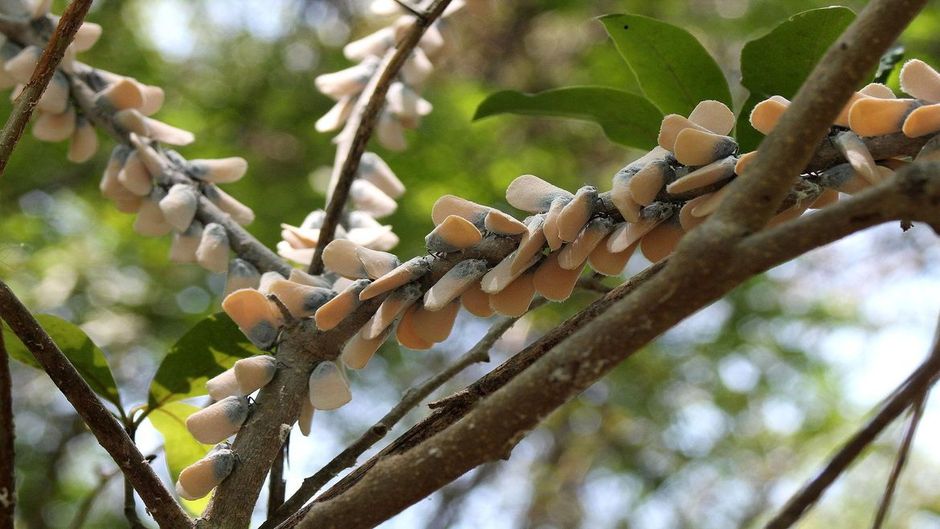Insects that look like flowers
What is most extraordinary is when a whole colony of individuals clusters to resemble a flower, and thus deceive birds.
30 APRIL 2023 · 11:00 CET

Nature provides numerous examples of insects which imitate the appearance of certain plants.
There are butterflies which, when folding their wings, perfectly mimic their vegetable background, and look like dry leaves. This feature distracts birds and other potential predators.
Certain geometrid caterpillars take on the appearance of an unmoving twig for the same purpose. Other insects look like thorns, stems, tender shoots, bark, etc. There are even many examples of the opposite phenomenon: flowers which imitate the shape and colour of some insects.
This is the case, for example, with certain orchids, such as the Mediterranean species the Ophrys speculum which simulates a female bee, with the obvious aim of attracting males so as to disseminate its pollen.
This kind of mimetism of animal species usually only occurs in a single individual.
However, what is most extraordinary is when a whole colony of individuals clusters to resemble a flower, and thus deceive birds. This is the mimetic strategy adopted by a species of plant-hopping insects native to the dry tropical forests of Madagascar, the scientific name of which is Phromnia rosea.
The adult individuals are gregarious, cluster around the branches of certain lianas, and as they have pink-coloured wings, when they fold their wings they look like a branch in blossom.1
There are several species of such insects distributed throughout not only the island of Madagascar but also eastern regions of Africa. There wings can have reddish, yellow, green or white colours, and their tiny size enables them, when they cluster together, to resemble real branches of flowers or inflorescences, which distracts potential predators.
Besides, it has been shown that not all the individuals have exactly the same colouring on their wings, and that the ones that are born with green wing tones tend to place themselves at one end of the inflorescence, where they can disguise themselves as the tender green shoots.
Nevertheless, if a bird does try to attack them, the whole “flower” immediately disperses as the insects fly away.

The origin of the behaviour of these “flying flowers” is not easy to explain from an evolutionary perspective. How could the natural selection of random mutations have produced colonies of insects capable of clustering together adequately in this way so as to imitate flowers?
It is also surprising that the floral structure that they produce by means of this clustering does not exist in nature. There is no flower that could have served as a model. It could be said that it is these tiny insects that “create” or “design” a new inflorescence that does not exist anywhere in actual botanic reality.
So who or what endowed these animals with the wisdom they need to bring this about? Logic tells us that an original creative knowledge is required.
Thousands of examples like this one abound throughout the biosphere, and constitute powerful arguments for real, not just apparent, intelligent design, contrary to what naturalistic Darwinism states.
1 https://www.naturepl.com/stock-photo-flower-spike-butterfly-bug-phromnia-rosea-leaf-hopper-adults-image01178553.html
Published in: Evangelical Focus - Zoe - Insects that look like flowers
